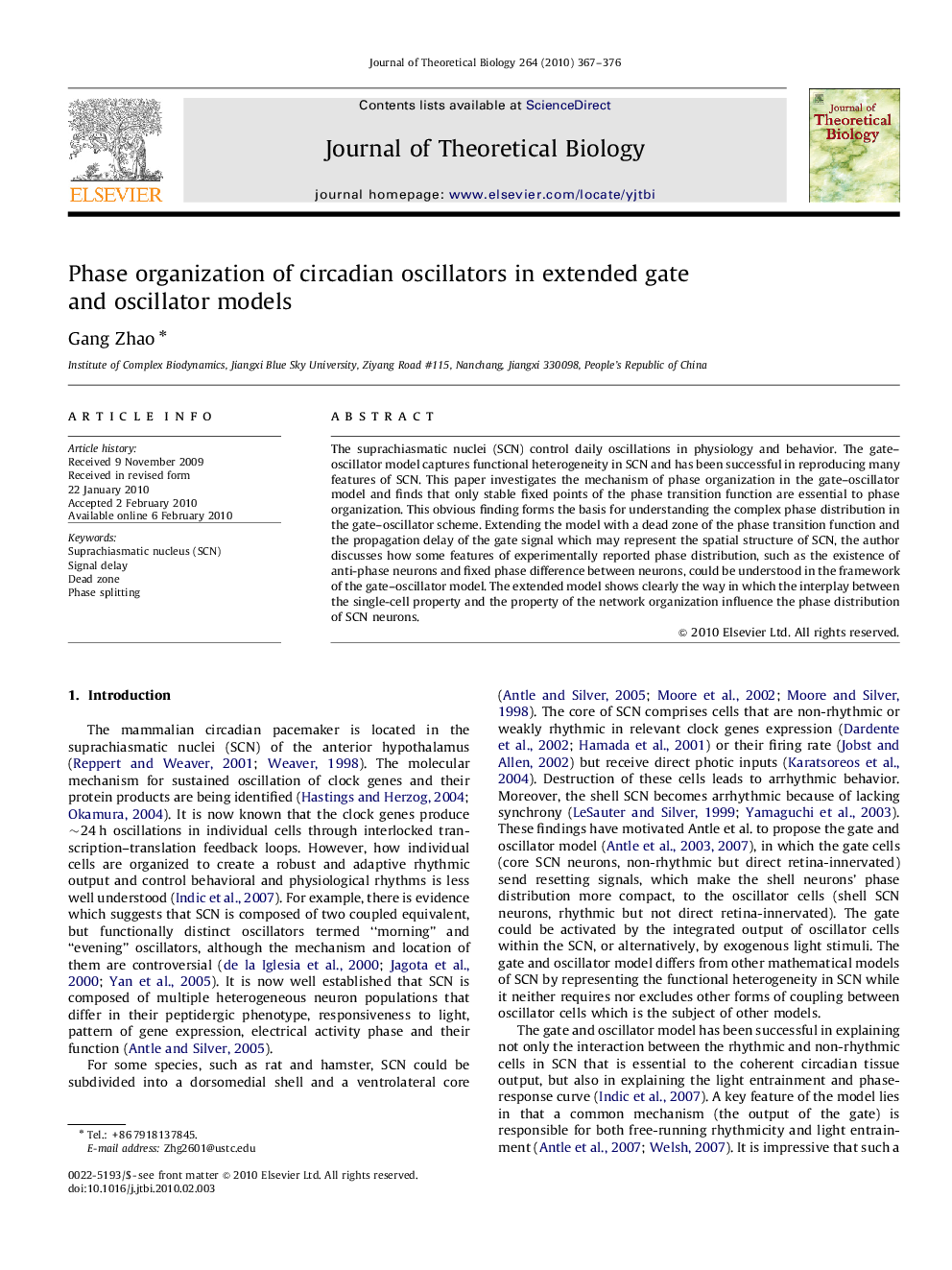| Article ID | Journal | Published Year | Pages | File Type |
|---|---|---|---|---|
| 4497642 | Journal of Theoretical Biology | 2010 | 10 Pages |
The suprachiasmatic nuclei (SCN) control daily oscillations in physiology and behavior. The gate–oscillator model captures functional heterogeneity in SCN and has been successful in reproducing many features of SCN. This paper investigates the mechanism of phase organization in the gate–oscillator model and finds that only stable fixed points of the phase transition function are essential to phase organization. This obvious finding forms the basis for understanding the complex phase distribution in the gate–oscillator scheme. Extending the model with a dead zone of the phase transition function and the propagation delay of the gate signal which may represent the spatial structure of SCN, the author discusses how some features of experimentally reported phase distribution, such as the existence of anti-phase neurons and fixed phase difference between neurons, could be understood in the framework of the gate–oscillator model. The extended model shows clearly the way in which the interplay between the single-cell property and the property of the network organization influence the phase distribution of SCN neurons.
